Keynote Lecture
Keynote Lecturers (in Alphabetical Order)
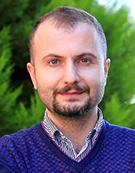 Murat Barisik
Associate Professor, Izmir Institute of Technology, Turkey (2018-Present)
Murat Barisik
Associate Professor, Izmir Institute of Technology, Turkey (2018-Present)
Assistant Professor, Izmir Institute of Technology, Turkey (2014-2018)
Assistant Research Professor, Southern Methodist University, USA (2013-2014)
http://minaeng.iyte.edu.tr/Murat Barisik is the director of the Micro/Nano Engineering Group of IZTECH in Izmir, Turkey. He received his B.S. (2006) and M.S. (2008) in Mechanical Engineering from Middle East Technical University, Turkey. He obtained his Ph.D. (2012) in Aerospace Engineering from Old Dominion University, USA, where he graduated in the first rank and received the ¡°Faculty Award in Aerospace Engineering 2012". He received the ¡°Brain Circulation Scheme¡± award from the European Union Marie-Curie COFUND program and relocated to Izmir Institute of Technology Mechanical Engineering Department. His research focuses on micro/nano-scale gas and liquid transport, heat transfer, surface wetting and electrokinetic phenomena. His pioneering work on nanoscale gas flows using Molecular Dynamics showed that the dynamic similarity between rarefied and nano-flows solely based on Knudsen number is incomplete. He described surface force effects and incorporated them into kinetic-theory-based calculations by introducing the ¡°law of the nano-wall¡±. He is the author of 3 book chapters and 40 scientific papers in international journals. He received the ¡°Career Award¡± from The Scientific and Technological Research Council of Turkey and the ¡°Outstanding Young Scientist Award¡± from the Turkish Academy of Sciences given by the President of Turkey."Law of the nano-wall" in nano-channel gas flowsGas flows in nano-channels and nano-porous media are observed in solid-state hydrogen storage systems, gas separation applications of nano-membranes, and gas recovery from shale reservoirs. Current studies attempt to resolve nano-gas transport by employing Kinetic Theory (KT) solutions of rarefied gas dynamics based on ¡°dynamic similarity¡± between the gas flows in low pressure environments and small-scale domains. However, such approaches only calculate rarefaction and do not consider the surface force field or surface adsorption originating from the force interactions of gas and wall molecules. In nano-scales, these surface effects create deviations in transport behavior from the kinetic theory-based solutions, which is a significant deficiency. By utilizing the ¡°Smart Wall Molecular Dynamics¡± algorithm for the first time in literature, we characterized the surface force field effects in nano-scale confined gas flows and concluded that the ¡°dynamic similarity¡± simply based on Knudsen and Mach number is incomplete. In this talk, I will present that surface van der Waals forces can dominate nano-channel flows, depending on the characteristic dimensions of the confinement. In order to identify the effects of the near-wall region, I will introduce the new dimensionless parameter B as the ratio of the surface force penetration length to the channel height and investigate nanoscale gas flows at various B values to explore similitude of nano-flows with rarefied gas flows. Results to be discussed show that dynamic similarity between the two for B ¡æ 0, where the near-wall region had very limited effect on the mass transport. However, for finite B values, the near-wall region covers larger portions of the flow domain exhibiting increased deviations from KT solutions and eventually resulting in cases where the bulk flow region completely disappears. For such a case, I will present that nano-scale gas flows in a wide range of Knudsen values show two distinct flow regions: near-wall and bulk flow regions. In the near-wall region, the velocity distribution was found exhibiting a universal behavior as a function of the local Knudsen number and gas?wall interaction parameters through an inner-layer scaling, while the bulk flow region can be determined using kinetic theory at an outer scaling. This duality can be interpreted as the ¡°law of the nano-wall,¡± based on which I will introduce an extended model that can correct kinetic-theory-based mass flow rate predictions for various nano-channel gas flows.
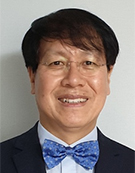 Wonho Choe
Professor, Korea Advanced Institute of Science and Technology (KAIST), Republic of Korea (1997-Present)
Wonho Choe
Professor, Korea Advanced Institute of Science and Technology (KAIST), Republic of Korea (1997-Present)
http://gdpl.kaist.ac.krWonho Choe is a professor in the Department of Nuclear and Quantum Engineering of the Korea Advanced Institute of Science and Technology (KAIST). He is also working as a joint professor in the Department of Physics and also Department of Aerospace Engineering at KAIST. He pioneered electric propulsion research in Korea with a particular focus on Hall thruster plasma science. Over the past two decades, his group has developed more than 20 different laboratory-model low power Hall thrusters, and some of them became the basis for thrusters commercialized by satellite industry. From 2021, his group, together with the Korea Aerospace Research Institute, has been leading the industry-led development of 200 mN Hall thrusters. His research interests also include physics and applications of low temperature weakly-ionized plasmas, and the development of advanced imaging plasma diagnostics such as plasma tomography. He is currently the Vice Chair of the Association of Asia Pacific Physical Societies - Division of Plasma Physics (AAPPS-DPP), the Vice President of Korea Accelerator and Plasma Research Association (KAPRA), a member of the Science and Technology Advisory Committee of ITER International Organization, and a member of the International Union of Pure and Applied Physics (IUPAP) C16 Commission. From 2009 to 2021, he served as the Director of the Impurity and Edge plasma Research Center supported by the Korean National Research Foundation. He received the KAIST Technology Revolution Excellence Award, the Academic Award from the Korean Vacuum Society, the Prime Minister¡¯s Achievement Award, and the Minister of Education, Science and Technology Achievement Award. He obtained his PhD degree from Princeton University and has co-authored 185 SCI(E) papers in various journals including Nature and Nature Communications.Unique physical features of cylindrical hall thruster plasmas for low power operationThe Hall thruster is an efficient space electric propulsion system that utilizes E¡¿B plasma to accelerate ions to high speeds (~15 km/s) and provides a high thrust-to-power ratio (~60 mN/kW). For miniaturization of Hall thrusters for low power operation, cylindrical Hall thrusters are considered advantageous because larger plasma volume-to-surface ratios are provided by the removal of magnetic components and channel walls surrounding the thruster axis. In a cylindrical Hall thruster, the magnetic field is axially dominant near the thruster axis, and a plasma is formed in a hollow cylindrical discharge channel. Therefore, the axial as well as the radial components of the magnetic field play an important role in electron confinement and transport. Compared with conventional annular Hall thrusters, many interesting and unique physical features have been reported, such as high propellant utilization, a significant fraction of multiply-charged ions, and the presence of high energy ions. In addition, different electric potential profiles due to different magnetic field configurations and ion acceleration regions extending beyond several centimeters outside the discharge cavity have also been reported. Magnetic field tailoring, a magnetic field parallel to the thruster channel wall, has been attempted in a cylindrical Hall thruster. It resulted in higher thrust, higher propellant efficiency, and less erosion of the channel walls, suggesting that magnetic field tailored cylindrical Hall thrusters could be advantageous for space missions with limited propellant. The details of all these interesting physics of cylindrical Hall thruster plasmas will be discussed in the presentation.
 Stéphane Colin
Professor, University of Toulouse, France (2002-Present)
Stéphane Colin
Professor, University of Toulouse, France (2002-Present)
Associate Professor, University of Toulouse, France (1992-2000)
Assistant Professor, University of Toulouse, France (1992-2000)
http://institut-clement-ader.org/author/scolin/Stéphane Colin is a Professor in the Mechanical Engineering Department of the National Institute of Applied Sciences (INSA) in the University of Toulouse, France, since 2002. He obtained an Engineer degree from ENSEEIHT in 1987 and received his PhD in Fluid Mechanics from the Polytechnic National Institute of Toulouse in 1992. He created in 1999 the Microfluidics Group of the Hydrotechnic Society of France. Stéphane Colin initiated and co-chaired the series of Microfluidics French Conferences (¥ìFlu¡¯02 to ¥ìFlu¡¯06) and the series of Microfluidics European Conferences (¥ìFlu¡¯08 to ¥ìFlu¡¯18). His current research in microfluidics is mainly focused on gas microflows, with a particular interest in the experimental analysis of rarefied flows. He was the coordinator of the GASMEMS European Initial Training Network aimed at training young researchers in the field of rarefied gas flows in MEMS. He is the author of more than 150 scientific papers in international journals or conference proceedings and the editor or co-author of four text books. He is currently the Head of the Modeling and Simulation of System and Microsystem Group of Institut Clement Ader, which includes the Microfluidics Research Team (http://microfluidique.com/team/).Molecular tagging - an experimental technique for velocimetry and thermometry in internal rarefied gas flows.Obtaining local experimental data in internal rarefied gas flows is still a challenge. Most of the current data are relative to mass flow rates and inlet/outlet pressures for channel flows, or to local temperature and pressure measurements at the wall by microsensors or sensitive paints, but there is a crucial need for investigating velocity and temperature fields directly within the gas in a non- or at least low- intrusive manner. This talk presents recent developments of the molecular tagging technique developed for velocimetry and thermometry purposes in confined and rarefied gas flows, using acetone vapour as a luminescent molecular tracer. Velocity profiles are obtained in a pressure driven slip flow through a rectangular mini-channel in low-pressure conditions. Measured displacement profiles are used to reconstruct the velocity profile, taking into account molecular diffusion. Velocity slip is observed and measured at the wall. The potential of the technique for thermometry is also investigated, and it is demonstrated that temperature mapping is possible, thanks to the sensitivity of tracer luminescence signal to the tracer number density, which can be linked to the temperature in uniform pressure conditions. The current limits of molecular tagging velocimetry (MTV) and thermometry (MTT) are discussed and perspectives to improve this promising experimental tool are proposed.
 Zoltan Donko
Scientific advisor, Wigner Research Centre for Physics, Hungary
Zoltan Donko has graduated from the Technical University of Budapest and has been working in the field of low-temperature plasma physics for 30 years. During this time, his research has focused on experimental studies of gas lasers, electron transport in gases, direct-current and radio-frequency plasma sources. He has developed a family of particle-based simulation codes to investigate the physics of these systems at the level of elementary processes of individual particles. Another line of his research has focused on strongly coupled plasmas. He has developed Molecular Dynamics simulation codes to study the thermodynamic behavior (including higher-order correlations) and dynamical effects (collective excitations) of single- and multi-component systems, as well as their transport characteristics (diffusion, viscosity, and thermal conductivity). His recent work is mostly focusing on the physics of electron swarms and kinetic effects (power absorption modes, charged particle dynamics, formation of the particle distribution functions, driving voltage waveform tailoring) in low-temperature plasma sources, which he investigates by Monte Carlo and Particle-in-cell approaches, respectively. He has served for more than a decade as head of department at the Research Institute for Solid State Physics and Optics and later on at the Wigner Research Centre of Physics of the Hungarian Academy of Sciences. He was / is a member of committees of several international conference series. Besides his position at Wigner Research Centre of Physics, Budapest, he was a Visiting Scholar of Boston College, USA, for several years and currently holds a Mercator Fellow position at the Ruhr University Bochum, Germany and a Visiting Professorship at Osaka University, Japan. Besides teaching his Low-Temperature Plasma Physics course at Hungarian universities he has as well given courses on low temperature plasma science and numerical simulation techniques at several universities abroad. He is member of the Editorial Board of the IOP Journal Plasma Sources Science and Technology.Kinetic effects in charged particle transport, gas breakdown, and electrical dischargesCharged particle transport in electric fields often exhibits non-local characteristics, e.g. in cases when the field changes appreciably in space and/or time between collisions, or, even in the case of static fields, in the vicinity of boundaries. An accurate description of the transport under such conditions calls for the use of the methods of kinetic theory. The non-local transport of charged particles gives rise to a variety of kinetic effects in gas breakdown, as well as in electrical discharges. Particle-based simulations have been aiding for some time the understanding of fundamental phenomena in such physical settings. The rapid development of computational resources allows execution of precise simulations at the level of elementary processes and gives access to the velocity/energy distribution functions of the particles, and related transport coefficients, space- and time-resolved. Details of particle kinetics in transport phenomena, in gas breakdown, as well as in low-temperature plasmas can now be explored to great details, some of which (electron kinetics in drift tubes, gas breakdown under radio-frequency fields, particle kinetics, pattern formation, and control of distribution functions in capacitively coupled plasmas) will be highlighted in the talk. As a rigorous test of the computational results comparisons will be given with the results of relevant recent experiments.
Zoltan Donko
Scientific advisor, Wigner Research Centre for Physics, Hungary
Zoltan Donko has graduated from the Technical University of Budapest and has been working in the field of low-temperature plasma physics for 30 years. During this time, his research has focused on experimental studies of gas lasers, electron transport in gases, direct-current and radio-frequency plasma sources. He has developed a family of particle-based simulation codes to investigate the physics of these systems at the level of elementary processes of individual particles. Another line of his research has focused on strongly coupled plasmas. He has developed Molecular Dynamics simulation codes to study the thermodynamic behavior (including higher-order correlations) and dynamical effects (collective excitations) of single- and multi-component systems, as well as their transport characteristics (diffusion, viscosity, and thermal conductivity). His recent work is mostly focusing on the physics of electron swarms and kinetic effects (power absorption modes, charged particle dynamics, formation of the particle distribution functions, driving voltage waveform tailoring) in low-temperature plasma sources, which he investigates by Monte Carlo and Particle-in-cell approaches, respectively. He has served for more than a decade as head of department at the Research Institute for Solid State Physics and Optics and later on at the Wigner Research Centre of Physics of the Hungarian Academy of Sciences. He was / is a member of committees of several international conference series. Besides his position at Wigner Research Centre of Physics, Budapest, he was a Visiting Scholar of Boston College, USA, for several years and currently holds a Mercator Fellow position at the Ruhr University Bochum, Germany and a Visiting Professorship at Osaka University, Japan. Besides teaching his Low-Temperature Plasma Physics course at Hungarian universities he has as well given courses on low temperature plasma science and numerical simulation techniques at several universities abroad. He is member of the Editorial Board of the IOP Journal Plasma Sources Science and Technology.Kinetic effects in charged particle transport, gas breakdown, and electrical dischargesCharged particle transport in electric fields often exhibits non-local characteristics, e.g. in cases when the field changes appreciably in space and/or time between collisions, or, even in the case of static fields, in the vicinity of boundaries. An accurate description of the transport under such conditions calls for the use of the methods of kinetic theory. The non-local transport of charged particles gives rise to a variety of kinetic effects in gas breakdown, as well as in electrical discharges. Particle-based simulations have been aiding for some time the understanding of fundamental phenomena in such physical settings. The rapid development of computational resources allows execution of precise simulations at the level of elementary processes and gives access to the velocity/energy distribution functions of the particles, and related transport coefficients, space- and time-resolved. Details of particle kinetics in transport phenomena, in gas breakdown, as well as in low-temperature plasmas can now be explored to great details, some of which (electron kinetics in drift tubes, gas breakdown under radio-frequency fields, particle kinetics, pattern formation, and control of distribution functions in capacitively coupled plasmas) will be highlighted in the talk. As a rigorous test of the computational results comparisons will be given with the results of relevant recent experiments.
 Clinton P. T. Groth
Professor, Institute for Aerospace Studies, University of Toronto, Canada
Clinton P. T. Groth
Professor, Institute for Aerospace Studies, University of Toronto, Canada
http://arrow.utias.utoronto.ca/~groth/Prof. Groth heads the CFD and Propulsion group at UTIAS. He is a theoretical and computational fluid dynamicist with expertise in parallel, adaptive mesh refinement (AMR), finite-volume schemes for compressible non-reacting and reactive flows. He also has expertise in the computation of non-equilibrium, rarefied, and magnetized flows, and the development of generalized transport models and solution methods following from kinetic theory. He is a leading researcher in high-performance computing, the simulation of laminar flames with detailed chemistry, and the development of reliable and robust numerical techniques for performing large-eddy simulations (LES) of turbulent reactive flows. He is also currently pioneering the development and application of high-order and AMR methods for high-speed compressible flows of gases and plasmas as well as reactive flows, the formulation of accurate and robust moment closure techniques for describing micro-physical processes in non-equilibrium, rarefied gases flows, as well as the multi-phase flows associated with liquid fuel atomization and soot formation gas-turbine engines. He has extensive experience in the simulation of gas-turbine combustor flows under high-pressure conditions through collaborative research efforts with various industrial partners, including Pratt & Whitney Canada, a leading manufacturer of gas turbine engines for aviation applications.Development, numerical solution, and application of maximum-entropy-inspired moment closures for non-equilibrium gaseous flows with shocksThe development, numerical solution, and application of maximum-entropy-inspired moment closures are reviewed for the prediction of non-equilibrium gaseous flows with shocks. The moment closures of the maximum-entropy-based hierarchy possess a number of appealing characteristics from the mathematical, physical modelling, and computational perspectives. Firstly, moment closures in general can provide complexity reduction leading to reduced models that bridge macroscopic and microscopic scales, providing descriptions of both near-equilibrium and more general non-equilibrium flows which are much less computationally expensive than direct-discretization and particle simulation techniques. The approximate distribution functions of maximum-entropy models are strictly positive and correspond to the most likely forms for given finite sets of moments. The closures have also been shown to have a well-defined entropy, fully-realizable moments, and result in moment equations that are strictly hyperbolic. Additionally, the associated first-order, quasi-linear, moment equations are ideally suited for solution by schemes devised for hyperbolic conservation laws, have been shown to be far less sensitive to grid irregularities, and can offer an extra order of spatial accuracy when compared to mathematical models having an elliptic nature. While the singular nature of high-order members of the maximum-entropy hierarchy can present significant challenges, attempts to navigate these issues have clearly demonstrated the benefits of the highly non-linear features of these closures for accurately describing highly non-equilibrium flows with shocks using a reduced moment set. Following an overview of these desirable features, the progress to date in the development and application of maximum-entropy and maximum-entropy-inspired closures is reviewed, beginning with the lower-order members of the hierarchy, followed by the high-order closures, for which interpolative-based approximations for the closing fluxes are used to circumvent the requirements for repetitive numerical solution of the entropy maximization problem. Aspects of the numerical methods developed for the solution of the moment equations are discussed and predictions for a number of canonical flow problems are also given to demonstrate capabilities. A perspective for future development and application of the moment closures is also provided.
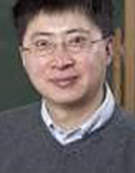 Yan Guo
Professor and Chair, Division of Applied Mathematics, Brown University, USA (1995-Present)
Yan Guo
Professor and Chair, Division of Applied Mathematics, Brown University, USA (1995-Present)
Assistant Professor, Princeton University, USA (1996-1997)
https://www.brown.edu/academics/applied-mathematics/yan-guoYan Guo received his B.S. from Peking University in 1987. He received his Ph.D. in Mathematics from Brown University in 1993. He was a Courant Instructor at the Courant Institute of Mathematical Sciences for 1993-95. He joined the faculty of the Division of Applied Mathematics at Brown University as an Assistant Professor in September 1995. He was an Assistant Professor at Princeton University for 1996-97. His professional awards include an Honorable Mention in SIAM Student Paper Competition in 1992, an A. P. Sloan Dissertation Fellowship in 1993, an NSF Postdoctoral Fellowship for 1995-98. Yan Guo is an A. P. Sloan Research Fellow for 1998-2000, Simon research fellow from 2015-2016. Yan Guo is an AMS fellow. Yan Guo¡¯s research concerns with PDE study of basic physical models, which include kinetic theory modeling dilute gases (Boltzmann equation), plasma physics (Landau equation or Vlasov-Maxwell systems) and dynamics of galaxies and stars (Vlasov-Poisson system); classical fluid models governed by Euler and Navier-Stokes equations, such as the two-fluid theory (Euler-Maxwell system) for describing plasmas, as well as Euler-Poisson system for describing self-gravitating stars. His work concerns with stability questions, boundary effects, as well as singularity formation from a mathematical standpoint.Geometric correction in Knudsen layer expansionKnudsen layer expansion is a classical tool to study diffusive expansion of kinetic equation for a rarefied gas near the boundary. We demonstrate that due to singularity of kinetic solutions at the grazing set, such classical Knudsen layer theory breaks down for general non-flat domains. On the other hand, for convex domains, we establish the validity of a new modified boundary layer expansion which incorporates the curvature correction. This has been a joint research program with Lei Wu.
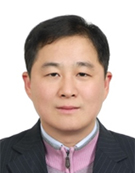 Seung Yeal Ha
Professor, Seoul National University, South Korea (2003-Present)
Seung Yeal Ha
Professor, Seoul National University, South Korea (2003-Present)
Van-Vleck Assistant professor, University of Wisconsin-Madison, USA (2001-2003)
http://www.math.snu.ac.kr/~syha/Seung Yeal Ha is a professor of Department of Mathematical Sciences at Seoul National University in Korea from 2003. He received a B.S. degree with Summa cum Laude from Seoul National University in 1997 and Ph.D. degree from Stanford University in 2001 under the guidance of Prof. Tai-Ping Liu. Ha¡¯s primary research interests are applied nonlinear analysis such as hyperbolic conservation laws, the kinetic theory of gases and collective dynamics of many-body interacting systems, application of flocking theory to finance and sociology. To date, he has written more than two hundred research papers. He got 14th Presidential Young Scientist Award in 2010 and 17th Korea Science Prize in 2017 from Korean government, and he gave an invited 45 min lecture at the ICM (International Congress of Mathematicians) 2014 hosted by the IMU (International Mathematical Union). He is a member of the Korean Academy of Science and Technology.A kinetic approach for collective dynamicsCollective coherent movements in classical and quantum many-body systems are often observed in our nature, e.g. swarming of fishes, synchronous chirps of crickets, flocking of birds, herding of sheep and array of Josephson junctions etc. After Winfree and Kuramoto¡¯s seminal works on the mathematical modeling of collective dynamics, phenomenological particle models were proposed to explain aforementioned collective behaviors from diverse scientific disciplines such as applied mathematics, biology, control theory and statistical physics, etc. In this talk, we survey a recent progress on the kinetic approach for such collective dynamics via kinetic equations which arise from the continuum limit and mean-field limit of particle models, and we also discuss recent applications of the kinetic approach of collective dynamics in the consensus-based optimization algorithms.
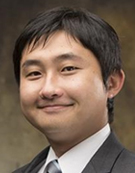 Kentaro Hara
Assistant Professor, Aeronautics and Astronautics, Stanford University, USA (2019-Present)
Kentaro Hara
Assistant Professor, Aeronautics and Astronautics, Stanford University, USA (2019-Present)
Assistant Professor, Aerospace Engineering, Texas A&M University, USA (2016-2019)
https://pdml.stanford.edu/Ken Hara is Assistant Professor of Aeronautics and Astronautics at Stanford University. He received a Ph.D. in Aerospace Engineering and a Graduate Certificate in Plasma Science and Engineering from the University of Michigan, and B.S. and M.S. in Aeronautics and Astronautics from the University of Tokyo. He was a Visiting Research Physicist at Princeton Plasma Physics Laboratory as a Japan Society for the Promotion of Science Postdoctoral Fellow. Prior to joining Stanford, he spent three years as a faculty member in Aerospace Engineering at Texas A&M University. Professor Hara¡¯s research interests include electric propulsion, low temperature plasmas, plasma physics (plasma-wall interactions, plasma-wave interactions), and computational fluid and plasma dynamics. He is a recipient of several awards, including the IEEE Nuclear and Plasma Sciences Society Graduate Scholarship Award, the Air Force Young Investigator Program Award, and the Department of Energy Early Career Award.Physics-based and data-driven models of low-temperature plasmas for aerospace applicationsPartially ionized gases enable technological advances in a wide range of disciplines. In aeronautics and astronautics, examples of applications include spacecraft propulsion, hypersonic systems, aerodynamics and aircraft propulsion, space weather, and material processing. While many engineering systems utilizing rarefied and ionized gases have matured, the fundamental physics remains complex due to the nonlinear interactions of various physical and chemical processes, including electromagnetic fields, instabilities, oscillations and turbulence, collisions and reactions, and plasma-immersed materials. The multiscale nature of the low temperature plasmas ranging from small-scale turbulent features to large-scale self-organizing structures poses significant challenges in modeling such nonlinear dynamics. It is therefore critical to develop various numerical capabilities accounting for the hierarchy of governing equations and the associated assumptions. This talk will present the development of theoretical models and computer simulation techniques of plasma dynamics, primarily for aerospace applications, including ablating arc discharge in atmospheric conditions and low-temperature magnetized plasmas in Hall effect thrusters. One class of computational models is physics-based models, such as fluid, particle-based kinetic, and grid-based direct kinetic (DK) methods. Another type of modeling is physics-informed data-driven techniques that utilize experimental data to infer the unobserved variables. In this talk, particular focus will be made on recent investigations of plasma oscillations, kinetic instabilities, and the effects of nonlinear inertia terms on cross-field electron transport.
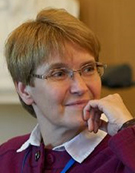 Elena Kustova
Professor, Saint Petersburg State University, Russia (1993-Present)
Elena Kustova
Professor, Saint Petersburg State University, Russia (1993-Present)
Visiting professor, University of Provence Aix-Marseille, France (1996-2007)
https://www.rarefiedgasdynamics.org/community/international-advisory-committee/elena-v-kustova/Elena Kustova is a head of Fluid Dynamics department at Saint Petersburg State University (SPbSU). She graduated from SPbSU (1988), received her PhD (1993) and Doctor of Science degree (2002) in Mechanics in the same university. Since 1993, she works at SPbSU as a researcher, associate professor, professor. She was invited as a visiting professor at the University of Provence Aix-Marseille (France, 1996-2007), the University of Bari (Italy, 2000, 2010), von Karman Institute for Fluid Dynamics (Belgium, 2014), Federal University of Parana (Brazil, 2014). E. Kustova conducts joint scientific research with scientific groups from Italy, France, Belgium, Brazil, USA. During the last years, she was a leader of more than 20 research projects funded by Saint Petersburg State University, Russian Foundation for Basic Research, Russian Science Foundation, European Space Agency. She published more than 150 peer-reviewed publications and two books.New challenges in modeling non-equilibrium carbon dioxide flowsCarbon dioxide is a major species in the Mars and Venus atmospheres, which makes studies of its physical and chemical kinetics of vital importance for space exploration programs. On the other hand, CO2 is the key indicator of human impact on the Earth environment; development of efficient vibrationally driven techniques of CO2 conversion requires a deep knowledge of elementary collisional processes and kinetics of excited states. In the present study, self-consistent mathematical models of different complexity are developed to describe non-equilibrium carbon dioxide flows under various conditions. All models are derived starting from the Boltzmann equation with the collision operator taking into account scaling of elementary processes characteristic times with respect to the fluid-dynamic time scale. The models provide closed sets of flow governing equations including expressions for the transport coefficients and relaxation terms for multiple intra- and inter-mode vibrational energy exchanges coupled to state-resolved or multi-temperature chemical reactions. As applications of the developed models, several challenging problems are discussed: an issue of large bulk viscosity in CO2; shock wave structure in carbon dioxide; state-to-state kinetics and heat transfer along the stagnation line under Mars entry conditions.
 Chang Liu
Research Associate, Hong Kong University of Science and Technology, Hong Kong SAR, China (2016-Present)
Chang Liu
Research Associate, Hong Kong University of Science and Technology, Hong Kong SAR, China (2016-Present)
Dr. Chang Liu is currently a research associate in Hong Kong University of Science and Technology. Dr. Liu receives his Ph.D. in Hong Kong University of Science and Technology and is awarded the Hong Kong mathematical society best thesis in 2016. Dr. Liu¡¯s research interests include the theory and computation of rarefied gas, plasma, multiphase flow, and photon transport. In the past years, he has been working on the multiscale unified gas-kinetic scheme (UGKS) and applied to the fields of plasma, multiphase flow, etc. Recently, Dr. Liu develops the unified gas-kinetic wave-particle (UGKWP) method, which is highly efficient for multiscale flow and especially high-speed flow simulation. Dr. Liu¡¯s work in UGKS and UGKWP method laid a concrete foundation for the recent development of multiscale numerical methods.A brief review of the direct modeling method: scheme construction, numerical property, and applicationsThe direct modeling method has been raised in 2010 and has been well developed for the last decades. The basic mythology is to model the multiscale flow physics on a finite discrete space based the partial differential equations. Therefore, it is a PDE-based modeling rather than a direct discretization of PDEs. Under the methodology of direct modeling, the multiscale numerical schemes such as the unified gas-kinetic scheme (UGKS), the discrete unified gas-kinetic scheme (DUGKS), and the unified gas-kinetic wave-particle (UGKWP) method have been developed and applied in the multiscale transport process of gas, plasma, photon, neutron, and the disperse multiphase flow. In this lecture, we are going to give a brief review of the construction, numerical property, and applications of these schemes. In the first section, we will review the three multiscale numerical methods: the deterministic UGKS and DUGKS, and the stochastic UGKWP method. The two important ingredients in scheme construction are the coupling evolution of the macroscopic quantities and microscopic distribution function, and the utilization of the local analytical solution in the construction of numerical flux. For UGKWP method, it is not only a multiscale scheme but also a computational complexity asymptotic diminishing scheme. In the second section, we are going to introduce a unified preserving (UP) property that all three schemes satisfy. In addition, we will show the merits and drawbacks of the three schemes. The application of the schemes in a wide varieties of multiscale transport process will be shown in the third section, as well as some acceleration techniques. In the last, we will give a brief summary and outlook for the future development of multiscale schemes.
 Duncan Lockerby
Professor, University of Warwick, UK (2006-Present)
Duncan Lockerby
Professor, University of Warwick, UK (2006-Present)
Lecturer, Brunel University, UK (2004~2006)
https://warwick.ac.uk/fac/sci/eng/staff/dal/Duncan Lockerby is Professor in the Fluid Dynamics Research Centre at the University of Warwick, where he has been since 2006. His research interests lie in: multiscale modelling; microfluidics and nanofluidics; microscale (rarefied) gas dynamics; flow control and drag reduction; and biological fluid mechanics. He has worked in partnership with a number of UK institutions, over a number of years, on the multiscale modelling of micro and nanoflows (www.micronanoflows.ac.uk). This collaborative team is currently funded by an EPSRC Programme Grant (https://bit.ly/372yVTk) that Lockerby leads. Work published in 2019 includes understanding the role of kinetic effects on the evaporation of nanodroplets (Phys. Rev. Lett. 123, 154501; web article: https://bit.ly/2Ot18wa) and a re-evaluation of the Rayleigh-Plateau instability at the nanoscale (J. Fluid. Mech. 861: R3; Physics Today article: https://bit.ly/2OumGIH). Administrative roles at Warwick include Head of Research and Deputy Head for the School of Engineering.Simulating low-speed rarefied flows around 3D particulate and dropletsThe simulation of low-speed dilute gas flow around microscale particulates has a raft of potential applications: in health (e.g. modelling inhalation of fine particulate), in security (e.g. predicting the transport of bacteria-laden aerosolized droplets) and in atmospheric science (e.g. understanding the climatic impact of volcanic ash). The fluid dynamics of individual particles in these cases can often be characterized as having very low Reynolds number (due to both speed and scale) and a small, but non-negligible, Knudsen number. This talk discusses recent progress in the prediction of such low-speed rarefied flows around 3D objects, using fundamental solutions to moment equations - continuum equation¡¯s derived from approximations to the Boltzmann equation. Fundamental solutions to Grad¡¯s 13 moment equations, and their regularized counterparts (the R13 equations), are presented. Using the Method of Fundamental Solutions, a versatile and efficient numerical technique, flow simulations around a variety of 3D geometries are presented, including rigid-body dynamics of interacting particulate, and the creeping flow internal and external to spherical droplets.
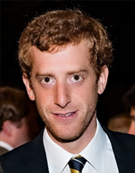 Jason Rabinovitch
Assistant Professor, Stevens Institute of Technology, USA (2021-present)
Jason Rabinovitch
Assistant Professor, Stevens Institute of Technology, USA (2021-present)
Mechanical Engineer, NASA Jet Propulsion Laboratory, California Institute of Technology, USA (2014-2021)
http://www.rabinovitchresearchgroup.com/Jason Rabinovitch is an Assistant Professor in the Mechanical Engineering Department at Stevens Institute of Technology (Hoboken, NJ, USA). Prior to Stevens, he was a Mechanical Engineer at the NASA Jet Propulsion Laboratory (JPL), California Institute of Technology, where he worked in the Entry, Descent, and Landing & Formulation Group. Jason received a B.Sc. in Mechanical Engineering from Yale University in 2008, a M.Sc. in Aerospace Engineering from the California Institute of Technology in 2009, a M.Sc. in Fluid Mechanics from Ecole Polytechnique (Paris) in 2010, and a Ph.D. in Aeronautics from Caltech in 2014. While at JPL, Jason was fortunate to work on a wide range of projects, from delivering flight hardware to the Mars 2020 mission, designing, implementing, and testing a low-density low-speed open jet fan-array wind tunnel for the (successful!) Mars Helicopter, to developing a hybrid rocket propulsion system for small satellites. His current research interests span a wide range of topics related to experimental and computational fluid mechanics applied to EDL, vehicle design, propulsion, and geophysical applications. In particular Jason¡¯s work focuses on modeling supersonic parachute inflations in the upper atmosphere of Mars for future Mars missions and using DSMC simulations to look at hypervelocity sampling in the upper atmosphere of Venus for the Cupid's Arrow mission concept.A quick overview of NASA planetary exploration missionsStarting with the Explorer 1 satellite launch in 1958, which enabled the discovery of the Van Allen Radiation Belts, NASA has been exploring space and making new discoveries for over 60 years. NASA planetary missions range in scope and size, from low-cost small-satellite science missions, to multi-billion dollar flagship class missions. Each mission has specific scientific objectives, a different risk posture, and different stages of formulation, design, and execution. These planetary exploration missions are driven by science - scientific objectives and goals are identified, and then a mission is formulated to complete these objectives. In order to help focus scientific investigations, NASA missions rely on the Decadal Survey reports to identify high-priority scientific questions. This presentation will give examples of planetary missions of different scales, insights into how mission concepts are created and how they get selected, and of course include examples of how DSMC simulations can be instrumental in many aspects of space mission design and operation.
 Takashi Tokumasu
Professor, Institute of Fluid Science, Tohoku University, Japan (1999-Present)
Takashi Tokumasu
Professor, Institute of Fluid Science, Tohoku University, Japan (1999-Present)
http://www.ifs.tohoku.ac.jp/nanoint/eng/index.htmlTakashi Tokuamsu has completed his Ph.D at the age of 28 years old from the University of Tokyo and was postdoctoral fellow in this University in one year. He moves to Institute of Fluid Science, Tohoku University as a research assistant in 1999, promoted to lecturer in 2003, associate professor in 2005, and professor in 2017. He is a professor of Institute of Fluid Science, Tohoku University. During his research career, he became a visiting professor of INSA-Lyon, France (4 months in 2008 and 2 months in 2019). He also became a visiting professor of Ecole Centrale de Lyon, France (1 month in 2012). He researched about the energy exchange during collision of N2, energy distribution of free jet expansion, generation of nucleus of a bubble. Now he is interested in the relation between the transport phenomena and nanoscale structure in polymer electrolyte fuel cells, solid oxide fuel cells and all solid-state Li ion batteries. He has already published more than 150 papers in reputed journals or peer review proceedings and more than 270 times presentation in international conferences. He got the Japan Society of Mechanical Engineers (JSME) Young Engineers Award in 2000, the Contribution Award for Flow Dynamic Division of JSME in 2013, the Certificate of Merit for Thermal Engineering Division of JSME in 2016 and Micro-Nano Science & Technology Division, Certificate of Merit for Contribution in 2019.Molecular dynamics simulations for nanoscale mass transport phenomena in polymer electrolyte fuel cellsPolymer Electrolyte Fuel Cells (PEFC) are expected to be one of next-generation power supply systems due to its low environmental damage, high efficiency, and low noise. Transport resistance of reactant and product materials such as proton, oxygen and water is the determining factor of its efficiency and it is important to analyze the mass transport phenomena in PEFC. A membrane electrode assembly (MEA) of PEFC, however, consists of gas diffusion layers (GDL), micro porous layers (MPL), catalyst layers (CL), and a polymer electrolyte membrane (MPL), where many nanoscale structures are constructed. In such flow fields, the characteristics of transport phenomena in MEA cannot be analyzed by macroscopic simulations and molecular simulation is a powerful tool to analyze these phenomena. In this study the nanoscale mass transport phenomena in PEFC are analyzed by large scale molecular dynamics simulations and the relation between the nanoscale structures and the transport phenomena is analyzed in detail. Especially, the transport phenomena of proton in PEM, oxygen permeability, oxygen scattering and proton diffusivity of ionomer in CL, and the transport phenomena of nanoscale water droplet in MPL were simulated. This information leads to a new design concept of materials for next generation polymer electrolyte fuel cells.
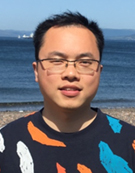 Lei Wu
Associate Professor, Southern University of Science and Technology, China (2019/11-Present)
Lei Wu
Associate Professor, Southern University of Science and Technology, China (2019/11-Present)
Senior Lecturer, University of Strathclyde, UK (2018/12-2019/10)
http://faculty.sustech.edu.cn/profiles/wul/?iscss=1&snapid=1&lang=enDr. Lei Wu is an Associate Professor at the Southern University of Science and Technology from November 2019. He received his BSc and MSc in Physics from Zhejiang Normal University, China. After obtaining his PhD in Fluid Mechanics from the University of Strathclyde (UK) in 2013, he continued to work there as a postdoctoral research associate, Chancellor's Fellow and Senior Lecturer. His research interest is in Rarefied Gas Dynamics, in particular to construct efficient and accurate numerical schemes to solve the Boltzmann equation for dilute gases and the Enskog equation for dense gases, as well as kinetic modelling for polyatomic gas flows, with applications in aerothermodynamics of space vehicles, micro-electromechanical systems, shale gas transportation, and multi-scale heat transfer in crystals. Recently he and his collaborators proposed the general synthetic iterative scheme (GSIS) which solves the linearized Boltzmann equation within dozens of iterations, at any Kn number.Efficient and accurate deterministic solver for the Boltzmann equation: the fast spectral method and general iterative schemeAbstract: One of the central problems in the study of rarefied gas dynamics is to find the steady-state solution of the Boltzmann equation quickly, which requires efficient algorithms to (i) compute the Boltzmann collision operator and (ii) find converged solutions using limited number of iterations. The first problem is tackled by the fast spectral method. For the second problem, when the Knudsen number is large, the conventional iterative scheme can lead to convergence within a few iterations. However, when the Knudsen number is small, hundreds of thousands of iterations are needed, and yet the ¡°converged¡± solutions are prone to be contaminated by large numerical dissipation. Recently, we put forward a general synthetic iterative scheme (GSIS) to find the steady-state solutions within dozens of iterations at any Knudsen number. The key ingredient is that the macroscopic equations, which are solved together with the Boltzmann equation and help to adjust the velocity distribution function, not only asymptotically preserve (AP) the Navier-Stokes (NS) limit, but also contain the Newton¡¯s law for stress and the Fourier¡¯s law for heat conduction explicitly. For these reasons, the constraint that the spatial cell size should be smaller than the mean free path of gas molecules is removed, making the GSIS a truly multiscale solver. The fast convergence rate and NS-AP properties are rigorously proven. Several numerical examples are simulated to demonstrate the efficiency and accuracy of GSIS.
 Yonghao Zhang
Professor, Mechanical Engineering, The University of Edinburgh, UK (2020-Present)
Yonghao Zhang
Professor, Mechanical Engineering, The University of Edinburgh, UK (2020-Present)
Weir Professor, Thermodynamics and Fluid Mechanics, University of Strathclyde, Glasgow, UK (2007-2020)
Computational Scientist, STFC Daresbury Laboratory, Warrington, UK (2001-2007)
http://www.jwfl.ac.uk/Yonghao Zhang completed his PhD from Mechanical Engineering at the University of Aberdeen, UK, in 2001, He worked as a Computational Scientist, then Senior Scientist, in the Computational Science and Engineering Department of STFC Daresbury Laboratory, UK. In 2007, He joined the Department of Mechanical Engineering at the University of Strathclyde. His research has mainly been on understanding multi-scale and multi-physical flow physics through theoretical and computational studies. His group has developed a suite of computational models for gas non-equilibrium flows and multiphase flows, especially at the micro/nano scales. These models can be exploited for both fundamental research and engineering design simulations. His recent work includes understanding and quantifying the transport of dense gas in ultra-tight porous media; investigating a new approach for digital rock analysis coupling multiscale modelling and imaging techniques; developing a multi-level parallel solver based on gas kinetic theory to utilize high-performance computing resources to directly calculate flow properties of porous media; establishing a first-principle based model to evaluate erosive damage of surface materials in a flow system transforming current semi-empirical methodologies; lattice Boltzmann modelling of droplet dynamics in lab-on-a-chip devices; modelling rarefied gas dynamics for aerospace applications.Modelling of Non-equilibrium Transport of Dense GasesIn highly confined nanochannel, gas molecule/surface interactions become more important even for dense gases. Meanwhile, the local mean free path of gas molecules may still be larger than channel dimension, resulting in rarefied flows of dense gases. In this case, the Boltzmann equation, based on the dilute gas assumption, becomes invalid. The widely-used Maxwellian boundary condition may not be able to capture the gas/surface interactions. Here, I will present our recent work on developing the Enskog model equation to describe non-equilibrium flow of dense gases. In order to exclude complex effect from interactions with wall surfaces, the model is first validated for the normal shock wave of non-ideal monatomic dense gases. We then apply our model to study dense gas flow in a nanochannel: instead of the diffuse wall boundary condition, we apply the Lennard-Jones wall potential. Our model can capture the density variation near the surface. Finally, I will discuss the effect of confinement and denseness on Knudsen minimum phenomenon. In this case, the results are obtained by molecular dynamics simulations and direct solution of the Enskog equation.







